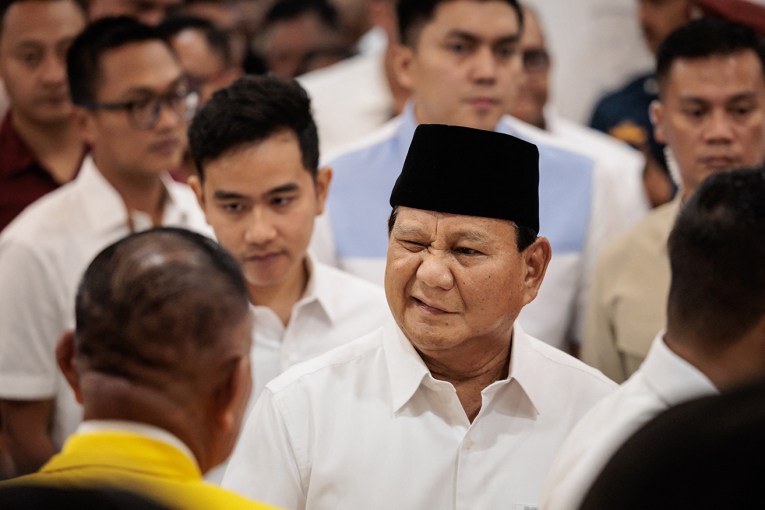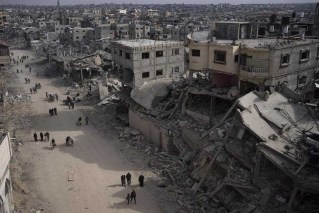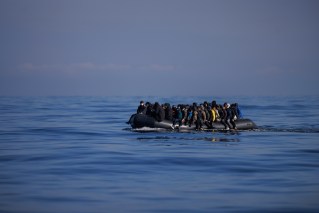Hiroshima and Nagasaki: 75 years on, what lessons have we taken to heart?

We’ve been blowing each other up for about a thousand years now. Gunpowder packed into bamboo tubes to start with. Bamboo abandoned for ceramic pots and then cast-iron casings.
Some thrown by hand, some left in place with a wick burning.
No doubt, witnesses to these early explosions thought that devils or other supernatural forces were at work. A few thoughtful souls may have wondered where it would all end.

From the early days of explosive warfare: the wind and dust bomb from the Ming dynasty. Credit: Creative Commons/Wikipedia
The short answer: we’ve made an unsecured promise in which bombs of a sort that could kill all of us in short order – that is, of the nuclear persuasion – must never be used again.
This is the legacy – the prayer, the hope – of Hiroshima and Nagasaki, flattened 75 years ago by atomic bombs, on August 6 and August 9, 1945, respectively.
Since then, it’s true that tens of thousands of people haven’t been killed in an instant – that is, all at the same time – whilst having their breakfast or walking their children to school.
Big-bang destruction has carried on at a more modest pace. A few hundred here. A few dozen there. Who needs nuclear technology? A well-stuffed backpack does the job. A hijacked plane. Drones piloted remotely by joystick. Missiles roaring from below the sea, drawn on through to sky to their pre-ordained coordinates.
A generation grew up thinking it would happen again

The smoke cloud billowing six kilometres above the blast site at Hiroshima.
Human beings are drawn to commemorating singular events. The first of anything. The first man on the moon, no matter there were two of them in the landing module. The first man to climb Everest, no matter there were two on a rope. The first city to be winked out in a single blast, no matter there were two in the same week.
We are drawn to strangeness. The Human Shadow of Death is a piece of stone from the steps at the entrance of a Hiroshima bank. It’s now an exhibition at the city’s Peace Memorial Park on the river where hundreds of lanterns will be floated to console the spirits of the nuclear dead.

The Human Shadow of Death etched in stone. Photo: Australian War Memorial/Yoshito Matsushige
I remember at school, in the 1960s, growing up with the firm idea that we could all be turned to ash by those damned Russians. Our teacher told the class, in a dramatically Gothic fashion, about the dark imprint on the stone said to be the residue of a man who had been sitting there when the bomb went off.
There were many such shadows throughout the city and one day we could be shadows too. What a thing to talk about in the playground as we ate our sandwiches.

Hiroshima, a city of rivers: not exactly sucked dry by the blast, but almost. Photo: Getty
Many still believe these people were vapourised and nothing remained. Science says there would have been bones.
Another oddity was the light from the flash being so bright as to burn the dark-coloured patters of people’s clothing into their skin. The light parts of clothing were thought to reflect this burning light in such a way to leave the person unharmed.
Water from the rivers were sucked up into the air as if by a tornado. Black rain began to fall 30 minutes after detonation, and continued for several hours.
Then there’s the silence to think of
It’s said that people caught in the blast heard nothing.
As the American journalist John Hersey wrote in his book-length report Hiroshima – the story of the bombing from the perspective of six survivors:

Paul Tibbets, the pilot of the Enola Gay, the plane that dropped the bomb on Hiroshima. Asked whether he had any regrets, he said: “Hell no, no second thoughts.” Photo: Getty
“Almost no one in Hiroshima recalls hearing any noise of the bomb. But a fisherman in his sampan on the Inland Sea near Tsuzu, the man with whom Mr. Tanimoto’s mother-in-law and sister-in-law were living, saw the flash and heard a tremendous explosion; he was nearly twenty miles from Hiroshima, but the thunder was greater than when the B-29s hit Iwakuni, only five miles away.”
We don’t really know how many people died from the blast at Hiroshima. Estimates range from 66,000 to 150,000.
We don’t know how many of the survivors developed cancer from the radiation.
A perverse consequence, according to one study that followed 120,000 survivors of the atomic bombings: those “exposed to between 0.005 and 0.5 Grays of radiation (on the threshold of light radiation sickness) had lower relative mortality than control subjects not exposed to atomic bomb radiation.”
In other words, people who got a low dose of radiation enjoyed better health and longevity than those who weren’t radiated.
The bombings may have been for nothing
We’re no longer sure that the bombing of Hiroshima and Nagasaki helped end the war – Russia entering the war against Japan three days after Hiroshima may have had more influence. A significant number of Americans no longer support the attacks or believe they can be justified.
I remember repeatedly reading John Hersey’s essay as a teenager. One of the passages I returned to (and imagined my family living through) was this:

Captain Robert Lewis, co-pilot of the Enola Gay. In a letter to his parents he wrote: “I honestly have the feeling of groping for words to explain this… My God what have we done.” Photo: Creative Commons/Wikipedia
“As Mrs. Nakamura stood watching her neighbor, everything flashed whiter than any white she had ever seen. She did not notice what happened to the man next door; the reflex of a mother set her in motion toward her children. She had taken a single step (the house was 1,350 yards, or three-quarters of a mile, from the center of the explosion) when something picked her up and she seemed to fly into the next room over the raised sleeping platform, pursued by parts of her house.
“Timbers fell around her as she landed, and a shower of tiles pommelled her; everything became dark, for she was buried. The debris did not cover her deeply. She rose up and freed herself. She heard a child cry, “Mother, help me!,” and saw her youngest—Myeko, the five-year-old—buried up to her breast and unable to move. As Mrs. Nakamura started frantically to claw her way toward the baby, she could see or hear nothing of her other children.”
Hersey leaves the reader dangling there, moving on to another survivor’s morning.
When I read it now, I think how the scene has continued to play out, over and over. The big bang. Not nuclear perhaps, but big when it goes off underneath you.
In the Hiroshima Peace Memorial Park is a flame that has burned since it was lit in 1964. The plan is to keep it burning until all nuclear bombs on the planet are destroyed.
A year after it was lit, the US began its Rolling Thunder bombing campaign in Vietnam. Just regular bombs. And regular people clawing through the wreckage looking for their children. And so it goes in all those news reports we don’t like to watch or light a candle for.








